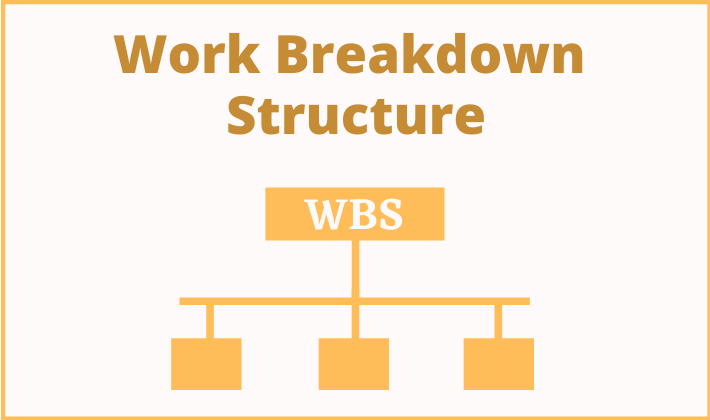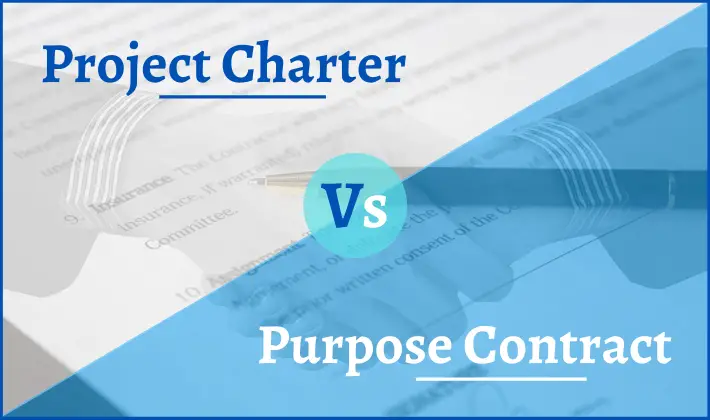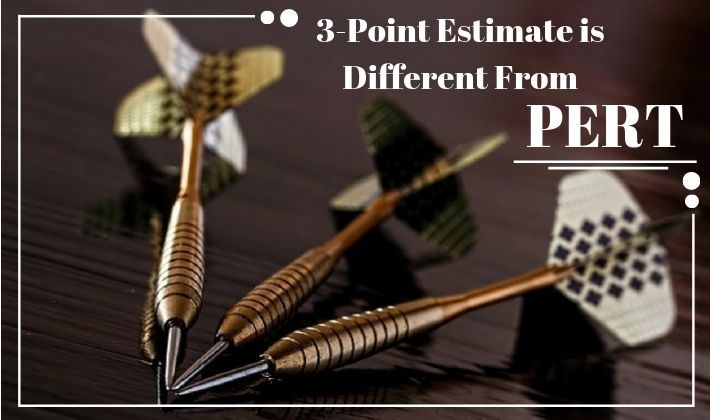Is configuration management part of change management? Or, is it the other way around?
A few months ago, there was an interesting discussion on one of the LinkedIn forum. The discussion was focused on configuration management vs change management. A few participants said that Configuration Management Plan is part of Change Management Plan. While other opined that change management plan is part of configuration management plan. Both set of participants provided their own reasons.
I think it was an entertaining discussion, but nothing more than that. One plan is not part of the other. PMBOK Guide clearly lists Configuration Management Plan and Change Management Plan as separate plans. PMBOK Guide mentions that they are subsidiary plans of Project Management Plan.
Configuration management and change management are complementary topics. Let us understand how.
Let us first understand the meaning of these terms. Sometimes, it is easier to understand the technical meanings of terms using normal dictionary. So, let us take a look at the English meanings of these terms
English Language Meanings of Configuration and Change
Configuration
the relative disposition or arrangement of the parts or elements of a thing.
Change
to make the form, nature, content, future course, etc., of (something) different from what it is or from what it would be if left alone.
Let us take an example of a machine. A machine is made up of components or parts. Each part is arranged in a specific configuration to make the machine whole.
In simple terms, configuration means arrangement of the parts while change means modification of the parts or the whole machine.
Initially, a configuration (arrangement) is created. Later that configuration can be changed.
Definitions Of Configuration Management And Change Management – Definitions & Differences
Let us look at project management meanings of configuration management and change management. I have written a post that defines terms related to change and change management. You should read that post to understand the formal definitions before reading further.
You can refer to Max Wideman’s Glossary for some standard configuration management and change management. The Project Management definitions are technically more appropriate, but the English definitions also convey the right meaning. Moreover, the English definitions are easier to understand.
Configuration Management Activities
At a broader level, configuration management involves following activities.
- Identification of configurable items – These items are maintained and controlled through the configuration management process. Examples of configurable items are product components, product design documents, process documents, requirements documents, project plans, baselines etc.
- Labeling of configurable items – A unique label or a version is given to each configurable item e.g. document control number, book edition, software version, machine model number etc. The labels need to be maintained. They can be changed, only if there is a change in the configurable item.
- Maintenance of configurable items – The configurable items need to be stored properly and protected from unauthorized access and unapproved changes.
- Configuration Accounting – Information about the status of each configurable items is recorded, maintained, and reported. This information may include physical location of configurable item, current status of proposed & approved changes, and who all have access to the item.
- Configuration Verification and Audit – The configurable items should be regularly verified. There should be periodic audit of the configuration process. The configuration verification and audit activities could include verification of correct labeling, ensuring only approved changes are implemented, confirming that reporting is done properly, ensure that the configuration process is working etc. These activities should be done in order to maintain the sanctity of configurable items.
- Defining Responsibilities – The activities related to configurable items have to be done by the team members. The team must define appropriate responsibilities and associated accountability at the start of the project. These responsibilities could include configuration maintenance, configuration security, access control, change control, reporting etc.
Change Management Activities
At a broader level, change management involves following activities. You can read my article 9 Rules to Answer PMP Change Management Questions to find details of these activities.
- Identification of change
- Impact analysis of change
- Documentation of Change (Request)
- Presentation of Change Request (CR) to Change Control Board (CCB)
- Decision on CR by CCB
- Communication of decision to Stakeholders
- Implementation of Approved CR
In addition to the above activities, identification of CCB members and defining authority of CCB is also done as part of the change management.
An Example
Let us take an example of a small hypothetical project to understand configuration management vs change management.
- A product P has to be created as the end result of the project.
- Today is Day X and various stakeholders have signed on Requirements R.
- Product P has two components C1 and C2. Requirements R provides detailed specifications for product P and its components C1 & C2.
- Project team regularly sends weekly status report (WSR) to the customer.
- Project team regularly holds internal meetings. The team creates minutes of meeting (MOM) document for each meeting.
- The project team considers P, C1, C2, and R as configurable items. They cannot be changed without formal approval (change management process).
- The project team considers WSR as a configurable item, but it can be changed without following the formal change management process.
- The project team does not consider MOM as a configurable item.
Let is analyze the above statements. The project creates many items including, but not limited to final product, product components, deliverables, documents, and work artifacts. All the items are not considered as configurable items. All configurable items may not follow a formal change management process.
Difference Between Configuration Management and Change Management
As noted earlier, configuration management and change management are complementary to each other. But, there are a few important points of difference between configuration management vs change management.
- Configuration management deals with identification, maintenance, status reporting, and verification of configurable items whereas change management deals with identification, impact analysis, documentation, and approving or rejecting of change requests.
- All the configurable items are created before they can be changed. Once created, it is not necessary that all configurable items are changed.
- Changes to some of the configurable items may not follow a formal change management process.
Note: Many reference books and blogs have given explanation of configuration management vs change management. Some of them note that configuration management is only done for the products, which is incorrect. The PMBOK Guide clearly mentions that configuration management can be done for any type of artifact including product, product components, processes, documents, plans, and baselines.
Related Articles
9 Rules to Answer PMP Change Management Questions
What is a Change Management?
Why is Defect Repair Considered as a Change Request?
Image courtesy of Toa55 at FreeDigitalPhotos.net







![Start to Start [SS] Relationship (Dependency) With Examples](https://www.pmbypm.com/wp-content/uploads/2014/06/start-to-start-1.jpg)

I have tried to take advantage of the discount on Joseph Phippip’s PMP training course, but I get $150. Is there a coupon code or something of this sort required?
Thanks,
Alex Wilson
alexwilson@avocetsoftware.com
Hi Alex,
There is no special coupon code. You just have to click on home page ( https://www.pmbypm.com/go/udemy-homepage-promo/ ) – automatically all courses are listed as $15.
So first click on home page ( https://www.pmbypm.com/go/udemy-homepage-promo/ ) and then click on course page ( https://www.pmbypm.com/go/pmp-course-joseph-phillips/ ). Now, you can wither checkout.
You can also buy any other course also till Sep 13 for $15.
All the best.
BR
Praveen.
I think your information above is not correct:
“Configuration Management Activities
At a broader level, change management involves following activities.”
I believe you meant to say, “At a broader level, configuration management involves the following activities”
Thanks Gregory. I appreciate. I have updated the article.
Your blog is the best alternative I have found for my PMP studies. Thank you.
Thanks for posting this article & clarifying the difference between configuration & change management.
While reading the scope management chapter in PMBOK6, it is mentioned on page 137 that requirement management plan’s one of the output contains the information about Configuration management such as how changes will be analyzed, how impacts will be analyzed,how they will be tracked & reported , as well as the authorization levels required to approve these changes.
The info in the above paragraph seems to be pertaining to change management system rather than configuration management. Please correct me if there is gap in my understanding.
On the page 701 of PMBOK 6, the configuration management system is defined as A collection of procedures used to track project artifacts and monitor and control changes to these artifacts.
On the page 532 of PMBOK 5, configuration management is defined as
“A subsystem of the overall project management system. It is a collection of formal documented procedures used to apply technical and administrative direction and surveillance to: identify and document the functional and physical characteristics of a product, result, service, or component; control any changes to such characteristics; record and report each change and its implementation status; and support the audit of the products, results, or components to verify conformance to requirements. It includes the documentation, tracking systems, and defined approval levels necessary for authorizing and controlling changes.”
In PMBOK 6’s page 88, the Change MP & Config MP is defined as follows.
Change management plan: Describes how the change requests throughout the project will be formally authorized and incorporated.
Configuration management plan: Describes how the information about the items of the project (and which items) will be recorded and updated so that the product, service, or result of the project remains consistent and/or operative.
Thanks for sharing the PMBOK Guide’s references. I will help many other readers.
Thank you for this article. I also recall some discussion on LinkedIn regarding Change Management vs. Configuration Management and probably chimed in on the discussion over the years to weigh in. From my perspective, as a veteran CM practitioner, I have seen the term terms interchanged, and transposed. I have always referred back to my truth, EIA-649, Standard for Configuration Management, and they have Configuration Change Management as one of the 5 areas of Configuration Management, making it an activity of the discipline.
“Change Management” is a broader term because it can encompass change across an enterprise, and how to manage that change (e.g, managing change that comes with reorganization) and may have nothing to do with engineering design changes. So I personally never use the term “change management” but refer instead to “configuration change management” which distinguishes a CM activity vs. an enterprise activity.
Hi Cheryl, Thanks for your comment. Here I have used change management in the context of project management and not for enterprise change management.